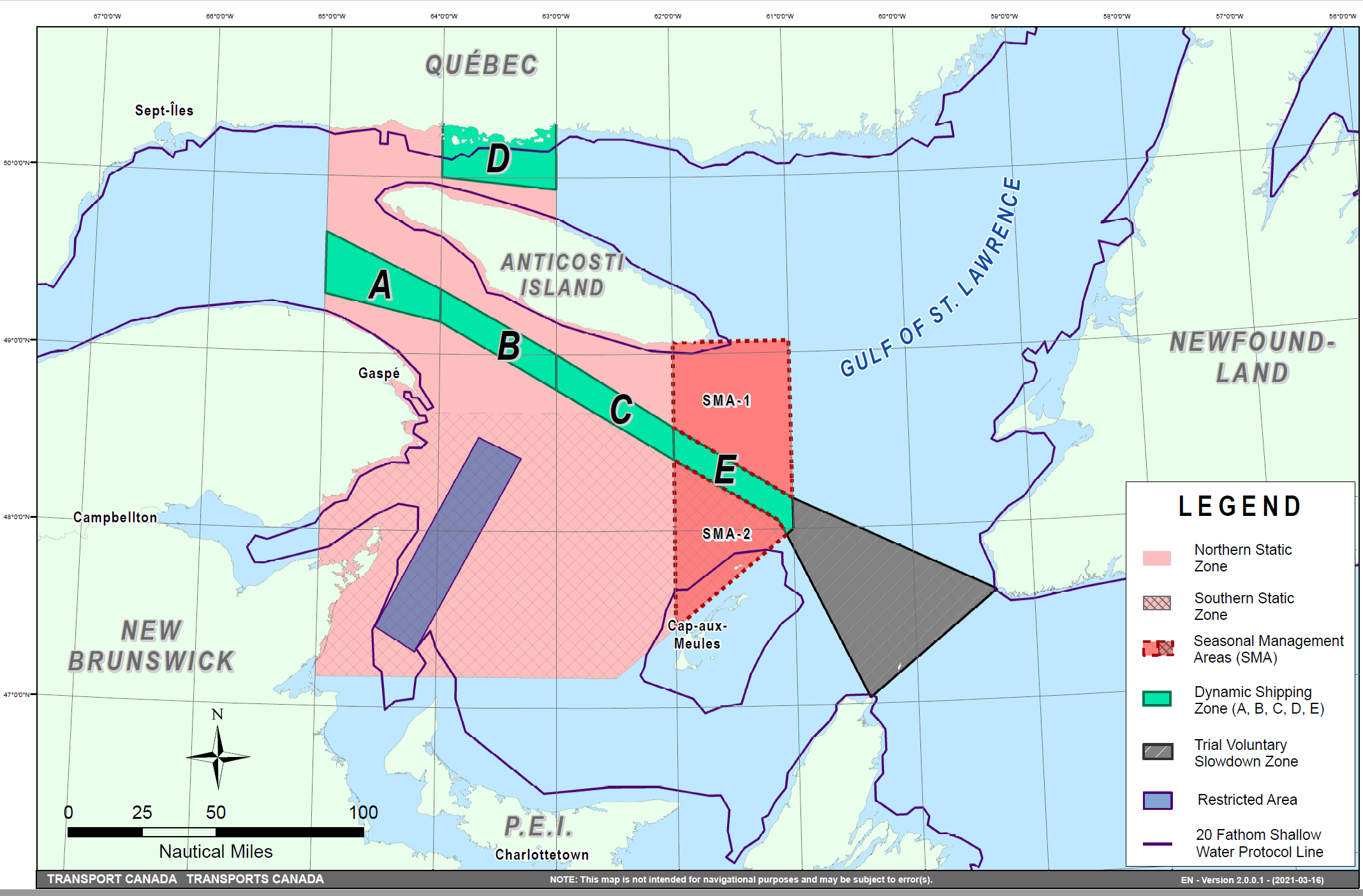Transport Canada issued a bulletin describing the updated speed restriction zones that vessels must follow in the Gulf of St. Lawrence from 28 April 2021, to reduce the risk of a vessel colliding with North Atlantic right whales (NARW).
With effect from 28 April to 15 November 2021, Canada has implemented changes to the speed restriction zones, based on consultations with industry and on scientific data:
- For a second consecutive year, a trial voluntary slowdown of 10.0 knots over the ground spanning from Cabot Strait (a line running from Cape North NS to Cape Ray NL) to the eastern edge of dynamic shipping zone E will be implemented at the beginning and end of the North Atlantic right whale season.
- Again this year, there will be a restricted area located in and near Shediac Valley. The location and size are both based on historical data of North Atlantic right whale aggregations, while the triggering mechanism is based on in-season detections.
- In addition, as of this year, the 36.57 m (20-fathom) shallow water protocol will apply to all commercial fishing vessels.
Exemptions
A vessel in distress or providing assistance to a person or a vessel in distress is the only exemption that will apply to all measures.
Static zones
In the static zones, all vessels above 13 m in length overall (LOA) must proceed at a speed of not more than 10.0 knots over the ground.
Exemptions
Air cushion vessels operated by or on behalf of the Government of Canada that are engaged in ice-clearing activities from April to June in and around Chaleur Bay are exempted when in operation.
36.57 m (20-fathom) shallow water protocol
Vessels engaged in any commercial fishing activity may proceed at a safe operational speed in waters not more than 36.57 m (20 fathom) deep.
If a notice to fish harvesters states that at least one right whale has been detected within a static zone in waters that are not more than 36.57 m deep, the 10 knots speed limit will apply to all vessels above 13 m in length overall (LOA) 15 days after the day on which the notice comes into effect.
[smlsubform prepend=”GET THE SAFETY4SEA IN YOUR INBOX!” showname=false emailtxt=”” emailholder=”Enter your email address” showsubmit=true submittxt=”Submit” jsthanks=false thankyou=”Thank you for subscribing to our mailing list”]
Furthermore, if a new notice to fish harvesters with the same statement is published or broadcast during the last seven days of the 15-day period, the speed limit will continue to apply for a further 15 days after the day on which the new notice comes into effect.
Canada’s speed restriction zones are defined as “static zones”, “dynamic shipping zones”, “seasonal management areas”, a trial “voluntary speed restriction zone’’ and a “restricted area”:


































































